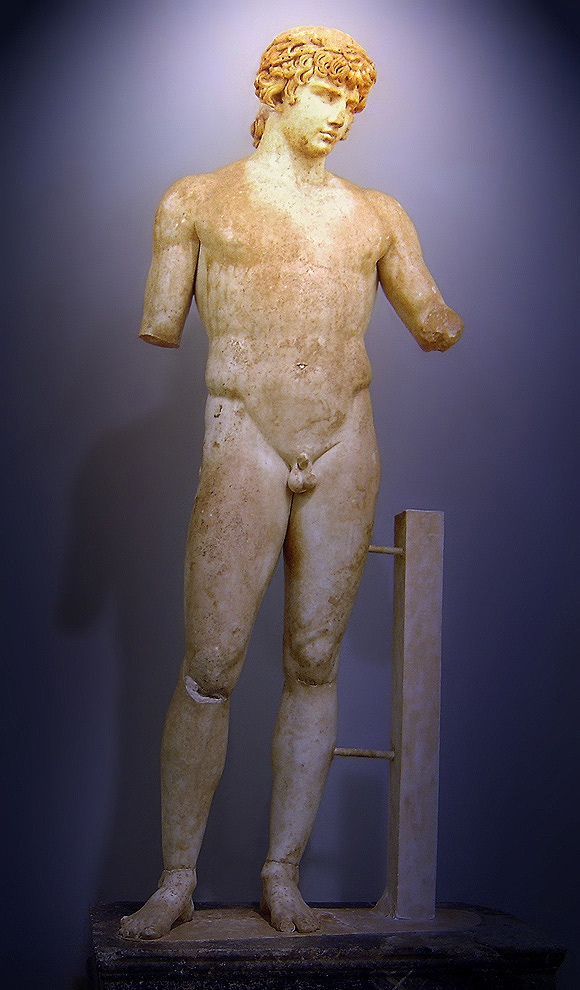Facts About Statue of Antinous
The Statue of Antinous at Delphi is an intriguing artifact of ancient art, discovered during excavations at the historic site. Antinous, a young Greek celebrated for his mesmerizing beauty, was the beloved companion of the Roman Emperor Hadrian. Tragically, Antinous met an untimely death under mysterious circumstances in the Nile, leaving Hadrian heartbroken. As a tribute to his lost companion and a devotee of classical Greek culture, Hadrian commissioned numerous statues of Antinous to be placed throughout his empire. He even established games in Antinous's honor, and the young man was subsequently venerated as a god.
This particular statue of Antinous was erected in 130 A.D., after his death, and is considered one of the most exquisite of its kind. Originally, it stood at the entrance of the sanctuary but was later relocated closer to the Temple of Apollo for protection after sustaining some damage. The statue's idealized features and well-preserved marble surface are characteristic of the period of Emperor Hadrian.
In the statue, Antinous is depicted in a contemplative pose, with his head gently tilted to the side. It has holes that would have held a bronze laurel wreath. His body is sculpted in the nude, a common representation of classical gods and heroes, reflecting Hadrian's admiration for classical Greek art. Despite its impressive qualities, the statue doesn't quite reach the artistic heights of earlier classical masterpieces.

 Turkey
Turkey